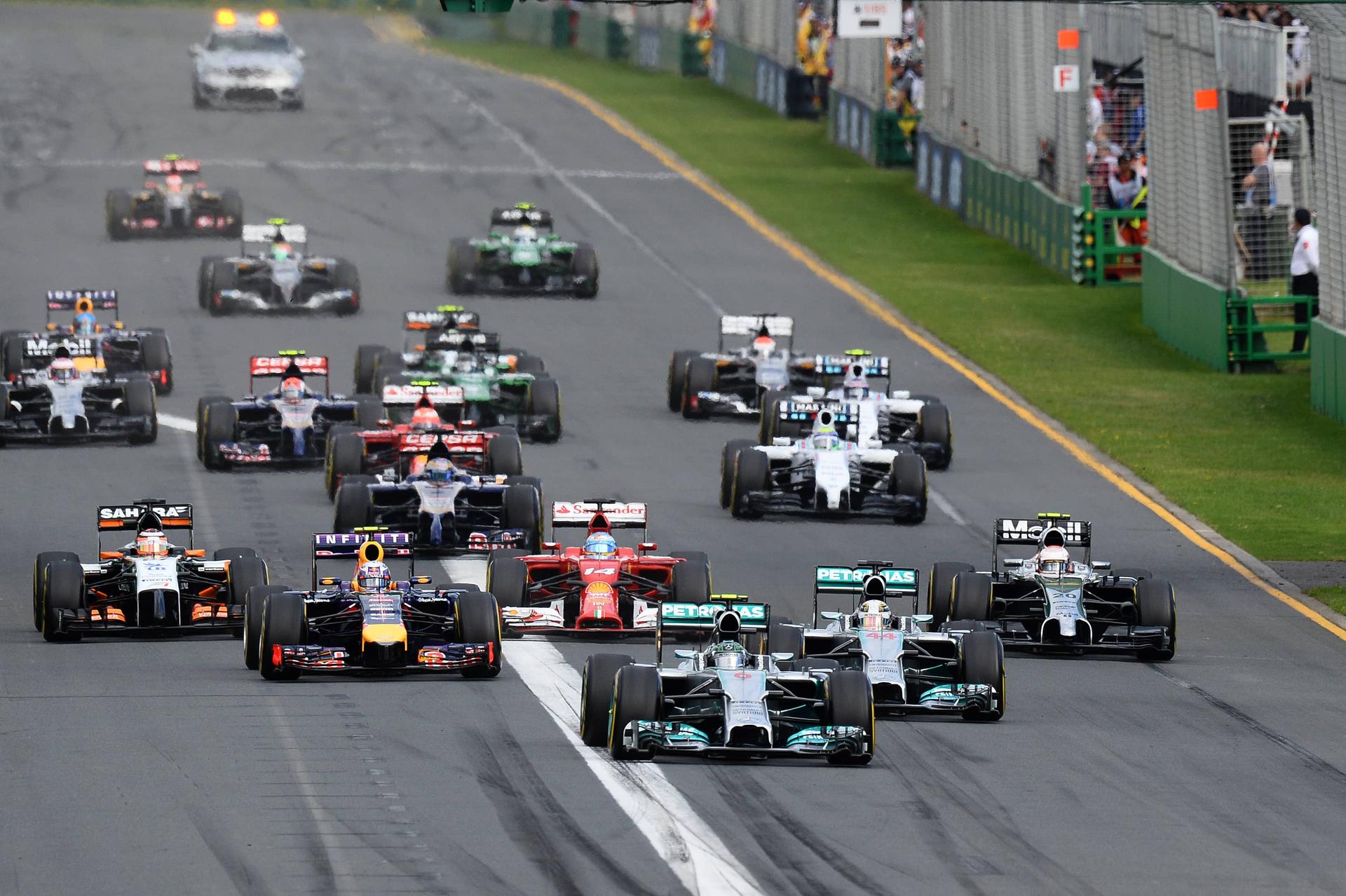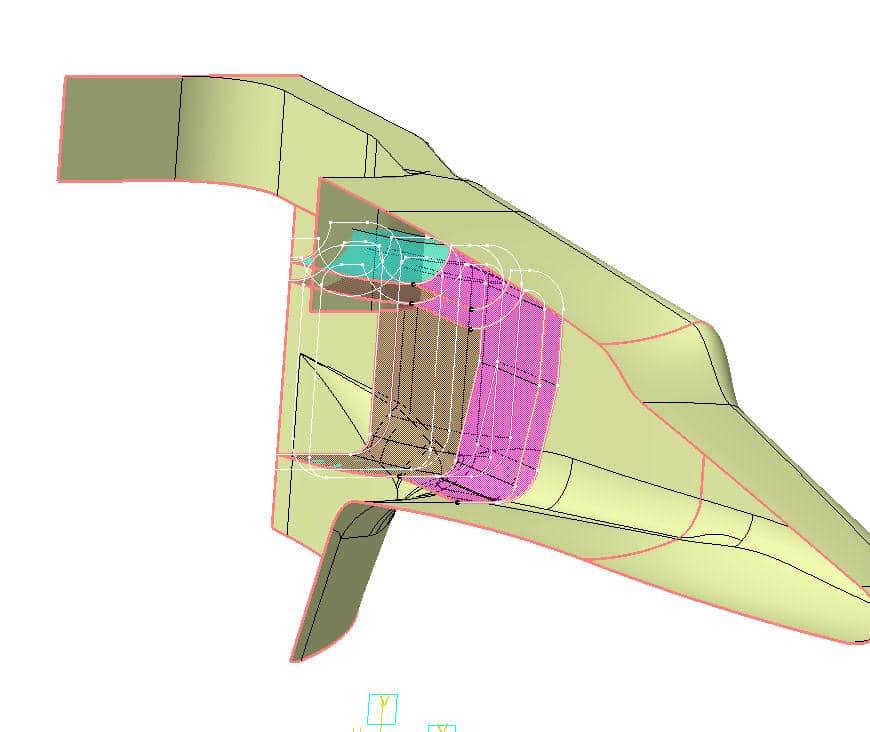Introduction
During this interview, we had the pleaseure of talking to Dominic Harlow, Motorsport Engineer with a wide backround in F1 sport. His passion towards motorsport and enthusiasm towards engineering have alowed him to be involved in many interesting projects throughout his career.

And It's Lights Out & Away We Go
Tell us about yourself and your career path? I’ve been involved in motorsport a long time, it’s where I have always wanted to take my career. When I arrived in F1, I started to work in data engineering at the track, performance engineering and vehicle science. A little bit of design work as well. In F1, at that stage with the great proliferation in use of simulation tools, lap simulation particularly, data acquisition and analysis tools, teams had quickly realised the importance of aerodynamics as the primary performance driver for the cars they could influence. So, as has always been the case, many years before I ever got involved, the aerodynamics were fundamental for the performance and were what really differentiated in the largest part between the teams. Thus, it is easy to understand that it is something which interested me a great deal, involving myself with the team in this respect. F1 is unique in the amount of aerodynamic development effort that a team expends, much more than what you find in any other formula. It is even multiple times the effort OEMs put into launching a new model. If you just look at CFD and wind tunnel hours F1 is doing far more work than an OEM does, in a single team and on a short period of time.

Thrive, Don't Just Survive
How is aerodynamic testing embedded within the design cycle of a car? Do you start with a clean sheet or do you iterate upon previous designs? It is a constant interplay between both. There is always a debate in F1 (and motorsport in general), when developing a car on whether to think of new concepts or to optimize the existing one. Dreaming up the latest and greatest designs for a car will allow you to unleash new areas of performance. Afterwards, you can evaluate how much should you continue pushing your existing avenues of development and iterate towards better solutions. Usually the iterative approach wins out against the complete reinvention of a new concept. But one cannot underestimate the importance of starting with the right concept, fundamentals and layout for car, so that you don’t force the iteration into areas that are not fruitful or where the ultimate performance is limited. The third aspect that comes into play are the regulations: just like the cars, the regulations become increasingly complex, so they place additional constraints on the development process and the car concept, and they change from time to time. Thus, they force you to rethink, to abandon certain areas and come up with new ones.
When you start the design cycle of a car, is aerodynamics positioned as the top priority? Aerodynamics do dominate conversations in F1, as does the power unit. In terms of chassis design, it is more of an integration task. It goes without saying that the power unit supplier is the one in charge of delivering maximum efficiency and good energy recovery. So, for the chassis designer, aero comes first. Tyres (and tyre management) and all the other aspects around that are next, along with good power-unit integration.
Additional research is performed to optimize structures and reduce weight. Satisfying the safety criteria (which thankfully continue to evolve) also requires quite a lot of effort. And the teams are always looking for improvements in stiffness and structural integrity. All the teams improve year on year, so not paying attention to a certain aspect will have you lose competitiveness.

Simulations & Testing
With regards to the simulations, how are aero mappings tested, are these done altogether with other suspension tuning or chassis adjustments? Almost all simulations involve a full model of the car (masses, suspension data, tire data, ...) and the aero map is one of the crucial elements in such a model. The higher the fidelity of the aero map, the more reliable the results of the complete simulation will be (like lap time simulations for example). It all depends on what aspects of the performance you are looking to focus on. Once you have the model, you can play with the inputs and evaluate the changes in the output.

Could you give an idea of the volume of CFD work done behind these cars? It is difficult to quantify the exact number of simulations done; it depends on how you define a simulation. There are so many recipes and methodologies applied to F1 CFD from the smallest sub-models of parts of the car to fully unsteady simulations at complex attitudes. And things get even more challenging when simulating multiple cars in order to better understand the wake and its effect during close following. How many of those you do depends on the size of the simulations, but you might see around 30,000 a year per team. By regulation the teams can only use a certain amount of resources to apply to elements of testing, thus it is constrained. It is still an intensive level of research and the balance between wind tunnel and CFD is now clearly leaning towards CFD as it becomes more and more available and efficient.
You have been working as a race engineer. From that position, have you seen a change in attitude towards aerodynamics from driver’s side? How big is such awareness of the importance of communication with engineers? The drivers certainly learn and develop in the same way teams do - as the team’s understanding grows, that becomes embedded in the drivers. The drivers do understand from early stages of their careers, that they have to speak the same language as the engineers. That way, they can help the engineers understand where certain aspects of the behaviour of the car are coming from and how those might be aerodynamically driven. A good driver that is aware of this will be able to speak to the team and help them develop a better understanding of the aerodynamics of the car. Also, they are heavily involved in the simulations back at the factory (like driver-in-the-loop-simulations), discussions with the engineers on concepts for the new car, ... giving feedback on setup & pointing out areas for improvement on the car.
F1 Future - Straight Line or Not?
Let's talk about the new regulations, which constrain the aerodynamic development of the car. How do you see the future for F1? For F1 as a sport, I certainly see a strong future - it has all the elements of a great sport and spectacle. It is unique in that it combines the individual brilliance of the driver along with teams and engineers. A spectacle in all its essence with huge events at each Grand Prix, touring all around the world.
From a technical and regulatory point of point of view, it is also about efficiency and a real-world challenge. There is nothing in life that is not constrained by what’s available. I think the sport is relevant, in terms of the mobility strategy, and certainly there is still an element of internal combustion engine innovation and trickle down of technology to the public. As long as things like sustainability & entertainment have been kept in mind, I think everything that has been decided upon is for the good of the sport.

As for the upcoming change in rules, what is the next big aerodynamic point of innovation in F1? The biggest changes will come in 2022, with the introduction of new regulations (based on development work that has already been done). Certainly, it will be interesting to see how this 'reset' plays out after all the progress that had been made on the current cars & the success of that philosophy. Engineering is a continuous process, new things are built and continue to evolve - so we may have to wait a few races to gather enough 'sampling points' before drawing conclusions on the success of the new regulations. Coupled with that is the change of tyres which is a huge thing aerodynamically.
Any other thoughts? I am certainly very interested to see the development of CFD and HPC as it applies to motorsport over the course of the coming years, to look how it is delivered and made available; on-premise, cloud, as open source or vendor code, exploring different workflows and applications.
Interesting links:
Dominic Harlow Consulting
Aero mapping for race cars
Run Your Own Simulation
How to Interpret CFD Results
